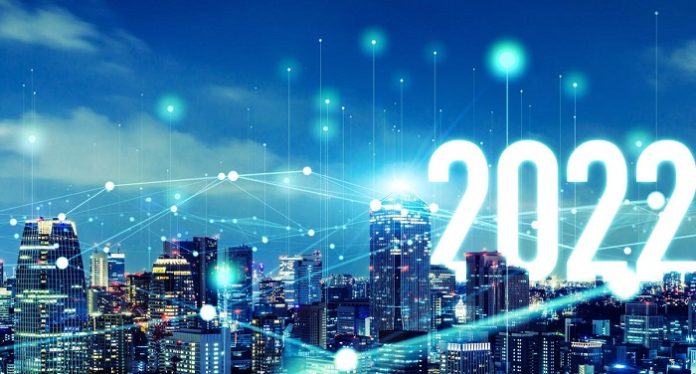As we are taking fast steps into 2022 on the road of digital transformation, Cyber threats are also following quickly. It is for certain, the threat landscape will continue to expand even as organisations are striving to improve their security posture. According to the findings of Trend Micro’s biannual Cyber Risk Index (CRI) report, 80% of global organisations say they will experience a data breach that will impact customer data across the next 12 months. Businesses are now facing the challenge of navigating the new and ever-evolving threat landscape and putting robust strategies in place to address these cyber-attacks. Top cyber risks include Man-in-the-middle attacks, Ransomware, Phishing, Social Engineering, File-less attacks and Botnets, among others.
Some expected highlights in the cybersecurity space are captured here.
Identity & Access Management along with Governance Risk and Compliance to take Centre-stage
With cyber-security becoming a business function and the new KPI for organisations, it is natural that IAM (Identity Access Management) and IGA (Identity Governance and Administration) solutions will play key roles. IGA, a component of IAM will demonstrate compliance with regulations that are relevant to identity management. IAM covers processes, relevant technologies and individuals to create, manage, authenticate and control the access to the organisation’s resources by employees, partners, associates and customers. IAM technologies will drive processes that reduce the risk of both internal and external data breaches and become the key component of the overall cyber-security strategy of the organisation.
Advanced IDAM, SIEM, SOAR and UEBA solutions will have accelerated adoption.
Advanced Identity & Access Management Solutions will play a key role in cyber security by leveraging more sophisticated technologies. Businesses will be able to meet the current and growing demands of interoperable technology across digital ecosystems, including siloes, complex legacy internal systems and connected devices.
More sophisticated SIEM tools and the Splunk technology will be leveraged more for advanced threat detection, security monitoring, incident management and forensics on a real-time basis. The need for SIEM (Security Information & Event Management) and SOAR (Security Orchestration, Automation and Response) solutions will grow and be leveraged to automate and orchestrate threat detection, reduce false positives with threat intelligence integrated, streamline teams, processes and tools. It will have capabilities to further the scale and speed at which they function. User & Entity Behaviour Analytics solutions will help in detecting insider threats, such as abnormal or risky behaviours of users.
A combination of multiple tools and solutions will be leveraged to address the increasing velocity and huge volume of security data and the current requirements of InfoSec and SOC teams.
Cybersecurity Mesh architecture will gain further traction
As new-age technologies and tools are growing in number, functionalities and types, the need for flexible security solutions will increase too. The remote working culture has also changed the traditional security perimeter driving security personnel to re-assess the new IT and Networking infrastructures. Adoption of Mesh Architecture is a good solution, which gives a holistic view of the cyber-security measures put in place. The design of the architecture will ensure each tool is talking to the other with every log is feeding back into the other. According to Gartner, the adoption of Mesh Architecture will cut costs of security incidents by 90% by 2024.
The Architecture is based on the philosophy of the Zero-Trust Network, where each device is independently secured in its own perimeter.
New vulnerabilities put IoT devices at further risks
IoT (Internet of Things) devices, lack the required built-in security in place to counter threats. These devices are generally used by threat actors for lateral movement and use them to spread malware to the network. Rise in WFH and BYOD arrangements will further expose employees’ devices to malware and attacks that could slip into the organisation’s network. Flaws could be due to insecure ecosystem interfaces, guessable passwords or unprotected network services. With such security issues, users are also vulnerable to DoS attacks and device hijacking.
As the IoT landscape expands, organisations cannot ignore the associated security risks and have to configure a powerful plan that includes addressing this aspect as well.
AI-enabled security may become mandatory
IT security teams are today working very hard to keep up with the technological changes and effectively address the fast-evolving cyber-threats. Going forward, in the year 2022, this situation will create a pressing need for Security professionals to leverage AI for monitoring, detecting, preventing and mitigating cyber-attacks. AI uses sophisticated algorithms and predictive intelligence. AI systems are able to detect even the smallest trace of attacks before they create damage through pattern recognition. Machine Learning, a subset of AI can learn the behaviour of cyber-criminals and proactively prevent future attacks. AI systems also inform the IT security teams about new threats and strategies and their prevention, thereby making these tools very popular among IT leaders. Furthermore, AI systems are cost-effective too.
Intelligent Automation to gain further traction
Intelligent Automation or Intelligent Process Automation will gain more importance in the coming year as it helps to automate several processes. By combining AI and Robotic Process Automation (RPA), which is run by rules, rote cyber-security tasks can be automated and free the human workforce to get more involved in addressing sophisticated threats. This Intelligent Process Automation integrates several sophisticated AI methodologies, Machine Learning and RPA to thereby uncover new possibilities that are unprecedented. By delegating repetitive, day-to-day tasks, including assembly line operations, it becomes objective-driven. Manual Labour will be reduced with an increase in productivity and precision besides reducing the cost of operations significantly. Business workflows get automated to further increase agility and consistency. Intelligent Automation will be used across industry verticals to enhance customer experience.
As we move forward into the New Year, the cyber-security landscape will continue to evolve, driving security teams to develop new strategies with the help of advanced technologies to mitigate risks. This clearly indicates the demand for cybersecurity professionals to ensure that the digital assets of the organisation are secure at any given point in time. Hiring specialised talent will be a challenge as they are few in number and are in high demand. The cyber-security team should focus on on-going training for employees, improve processes, systems and procedures to keep the cyber-attacks at bay.
Authored Article by:









